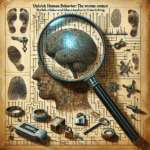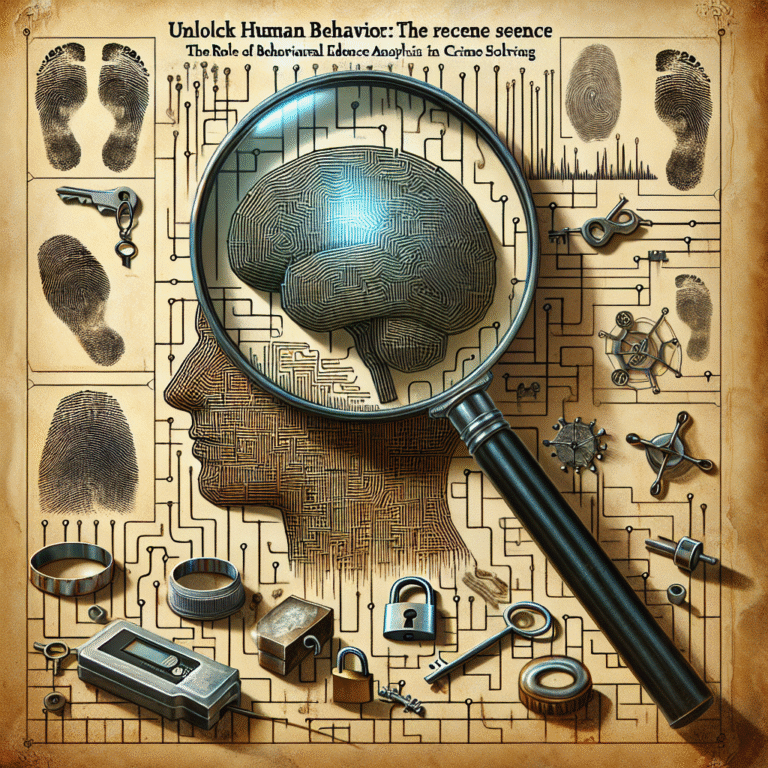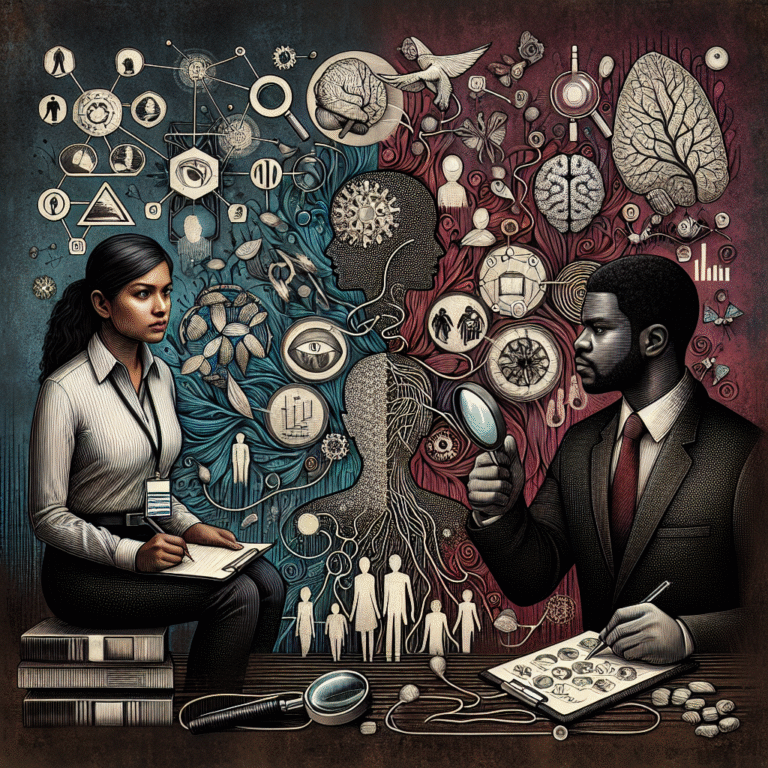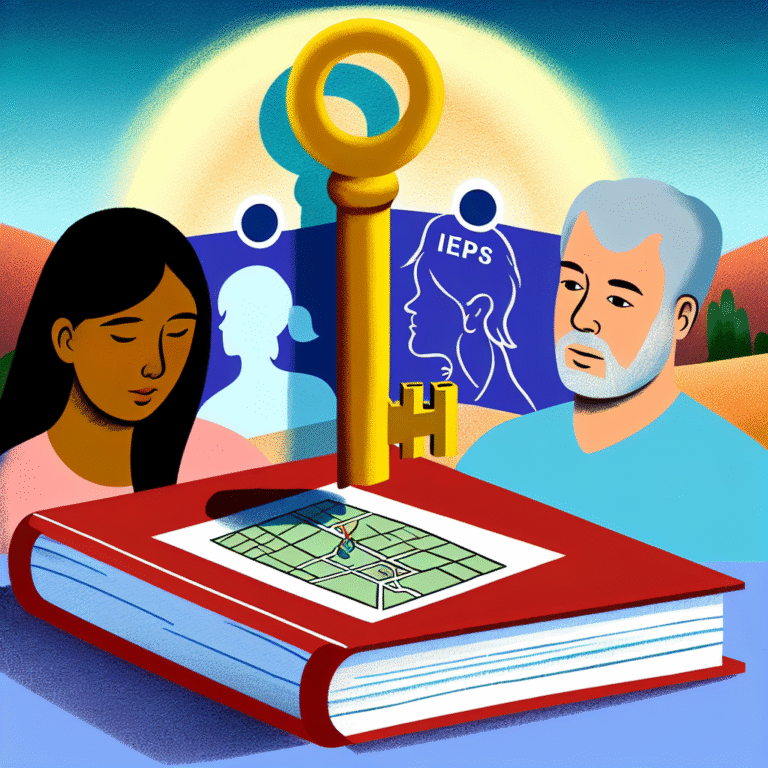
Introduction
Imagine walking through a crowded market and suddenly becoming acutely aware of someone’s nervous fidgeting, the way they avoid eye contact, or their abrupt changes in tone. What if you could decode these subtle signals to better understand their emotions and intentions? Welcome to the world of behavioral evidence analysis, where the intricacies of human behavior are laid bare, revealing insights that can transform personal and professional interactions. In this article, "The Science Behind the Signs: Understanding Behavioral Evidence Analysis," we will delve deep into the science of behavior, exploring how subtle cues tell us more than words ever could.
What is Behavioral Evidence Analysis?
Behavioral evidence analysis involves the systematic study and interpretation of non-verbal cues, actions, and reactions. This field combines psychology, sociology, and anthropology to provide a framework for understanding human behavior in various contexts.
Key Components
- Non-Verbal Communication: Body language, facial expressions, and gestures often communicate emotions more honestly than spoken words.
- Contextual Analysis: The environment and situation provide crucial cues that shape behavior.
- Psychological Underpinnings: Understanding the mental state behind actions allows analysts to interpret underlying motives.
Practical Applications
Whether in law enforcement, business negotiations, or personal relationships, behavioral evidence analysis is critical. From detecting deception to improving interpersonal communication, the scope is vast.
Case Study: Detecting Deception
Consider the case of a well-known courtroom scene where a defendant’s demeanor seemed incongruent with their testimony. A behavioral analyst observed the following signs:
- Avoidance of Eye Contact: The defendant frequently looked away when discussing pivotal moments.
- Micro-expressions: Subtle indicators of fear flashed across their face, contradicting their calm words.
- Fidgeting: Nervous movements suggested discomfort with the questioning.
Analysis
By applying the principles of "The Science Behind the Signs: Understanding Behavioral Evidence Analysis," the behavioral analyst could argue that the combination of these cues pointed toward possible deception. This insight, grounded in solid behavioral research, became pivotal for the jury’s deliberation.
The Science of Non-Verbal Cues
Facial Expressions
Facial expressions are universal in conveying emotions. Paul Ekman’s research identified seven primary emotions expressed through our faces: happiness, sadness, surprise, fear, disgust, contempt, and anger. These expressions are often instinctive and immediate, providing a window into a person’s emotional state.
Table: Emotional Expressions and Their Indicators
| Emotion | Facial Indicators |
|---|---|
| Happiness | Smiling, uplifted eyebrows |
| Sadness | Frowning, drooping eyelids |
| Fear | Wide eyes, raised eyebrows |
| Anger | Furrowed brows, tightened lips |
Body Language
Body language complements our spoken word. It can reinforce or contradict our verbal messages. An open posture may suggest confidence, while crossed arms might indicate defensiveness. Understanding these signs is a vital part of "The Science Behind the Signs: Understanding Behavioral Evidence Analysis."
Proxemics
Proxemics refers to the use of personal space in communication. Different cultures have varying norms about spatial proximity. For instance, someone from a culture that values close personal space may appear intrusive to someone from a culture that values distance.
The Role of Context
Behavior does not occur in a vacuum. Context shapes how we interpret the signs.
Emotional States
Understanding a person’s emotional state can clarify ambiguous signals. For instance, someone who is usually expressive might appear withdrawn in a stressful situation, affecting how we interpret their behavior.
Environmental Factors
Environmental context is crucial in behavioral analysis. A person at a job interview might exhibit nervous behavior, whereas the same individual at a social gathering might be more relaxed. Recognizing these shifts is essential for accurate assessments.
Techniques for Behavioral Evidence Analysis
Observational Techniques
- Baseline Behavior: Establish a normal behavior pattern to accurately gauge deviations.
- Contextual Observation: Engage in the environment to understand how situational factors influence behavior.
Analytical Frameworks
- The Four Dimensions of Behavior: This model examines emotional, cognitive, social, and physical dimensions of human actions.
- Behavioral Triads: Focus on the interplay between verbal, non-verbal, and contextual cues.
Real-Life Applications
In Business
Understanding behavioral signs can lead to more effective business negotiations. A negotiator who can read body language and micro-expressions can tailor their strategy, leading to more mutually beneficial outcomes.
In Law Enforcement
Behavioral evidence analysis is critical for interrogations. Officers trained to recognize signs of deception can adjust their questioning techniques to elicit truthful responses.
In Personal Relationships
Awareness of non-verbal signals can enhance communication in personal relationships. Recognizing when a partner’s tone or posture changes can help foster an environment of trust and openness.
Case Study: Corporate Negotiation
In a corporate negotiation between two giants, one executive displayed signs of discomfort while discussing a financial figure.
Observations:
- Sweating: Despite a cool room, the executive was visibly sweating.
- Lack of Enthusiasm: While discussing potential growth, they slumped in their chair, casting doubt on their excitement about the deal.
Analysis
The behavioral evidence pointed toward their apprehension about the proposed partnership. By applying the insights from "The Science Behind the Signs: Understanding Behavioral Evidence Analysis," the negotiating team adjusted their approach, ultimately resulting in a better agreement.
Conclusion
"The Science Behind the Signs: Understanding Behavioral Evidence Analysis" opens the door to a world of insights that can significantly enhance our interpersonal interactions, decision-making, and understanding of ourselves and others. By mastering the art of reading behavioral cues, we equip ourselves with tools to navigate life’s complexities more effectively.
Key Takeaways:
- Non-verbal cues are often more telling than words.
- Context matters significantly in interpreting behavior.
- Skills in behavioral analysis can enhance personal and professional interactions.
FAQs
1. What are the main components of behavioral evidence analysis?
Behavioral evidence analysis includes non-verbal communication, contextual analysis, and psychological understanding of actions.
2. How can I improve my skills in reading body language?
Practice observational techniques, study emotional expressions, and analyze interactions in various contexts to better understand human behavior.
3. Can cultural differences affect behavioral analysis?
Yes, cultural norms significantly influence how people express emotions and use personal space, impacting the interpretation of behavioral signs.
4. Where can behavioral evidence analysis be applied?
Applications include law enforcement, business negotiations, counseling, and personal relationships.
5. Is behavioral analysis an exact science?
While it’s grounded in psychology and behavior research, the interpretation of signs can vary based on context, making it more of an art than a precise science.
Understanding the principles discussed in "The Science Behind the Signs: Understanding Behavioral Evidence Analysis" can empower you to enhance your personal and professional interactions significantly. So, next time you find yourself in a conversation, remember: the signs are there; you just have to learn how to read them!















